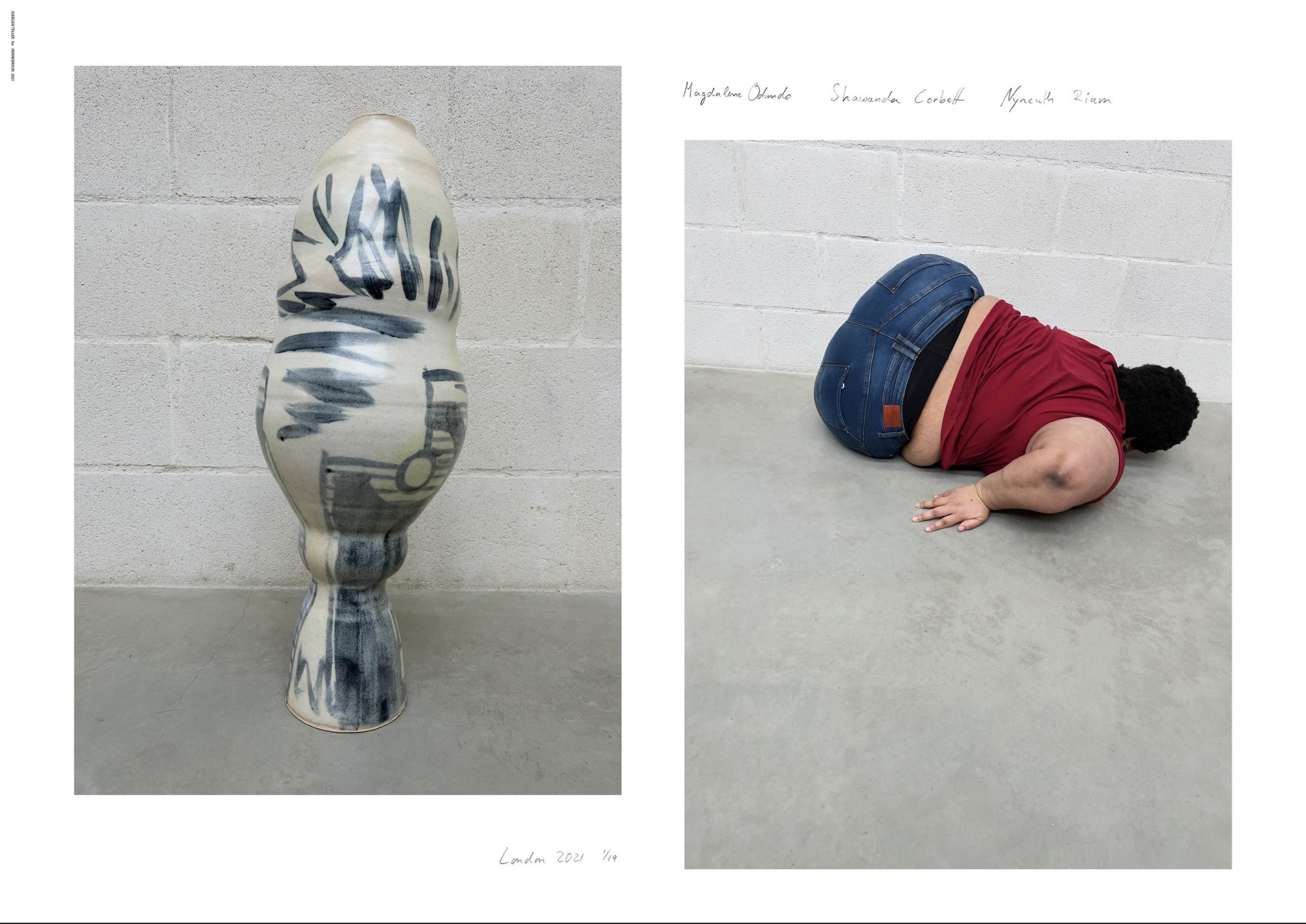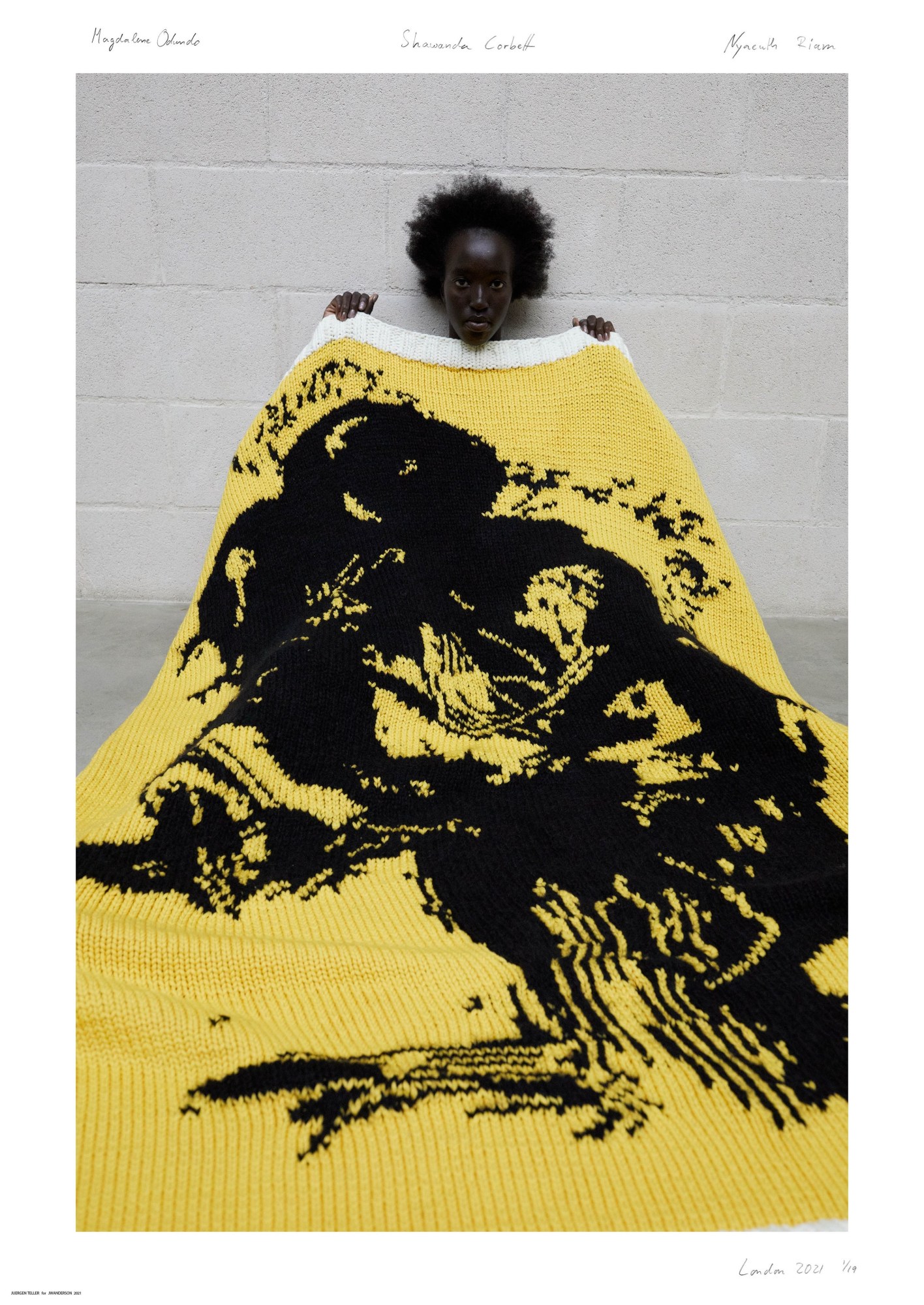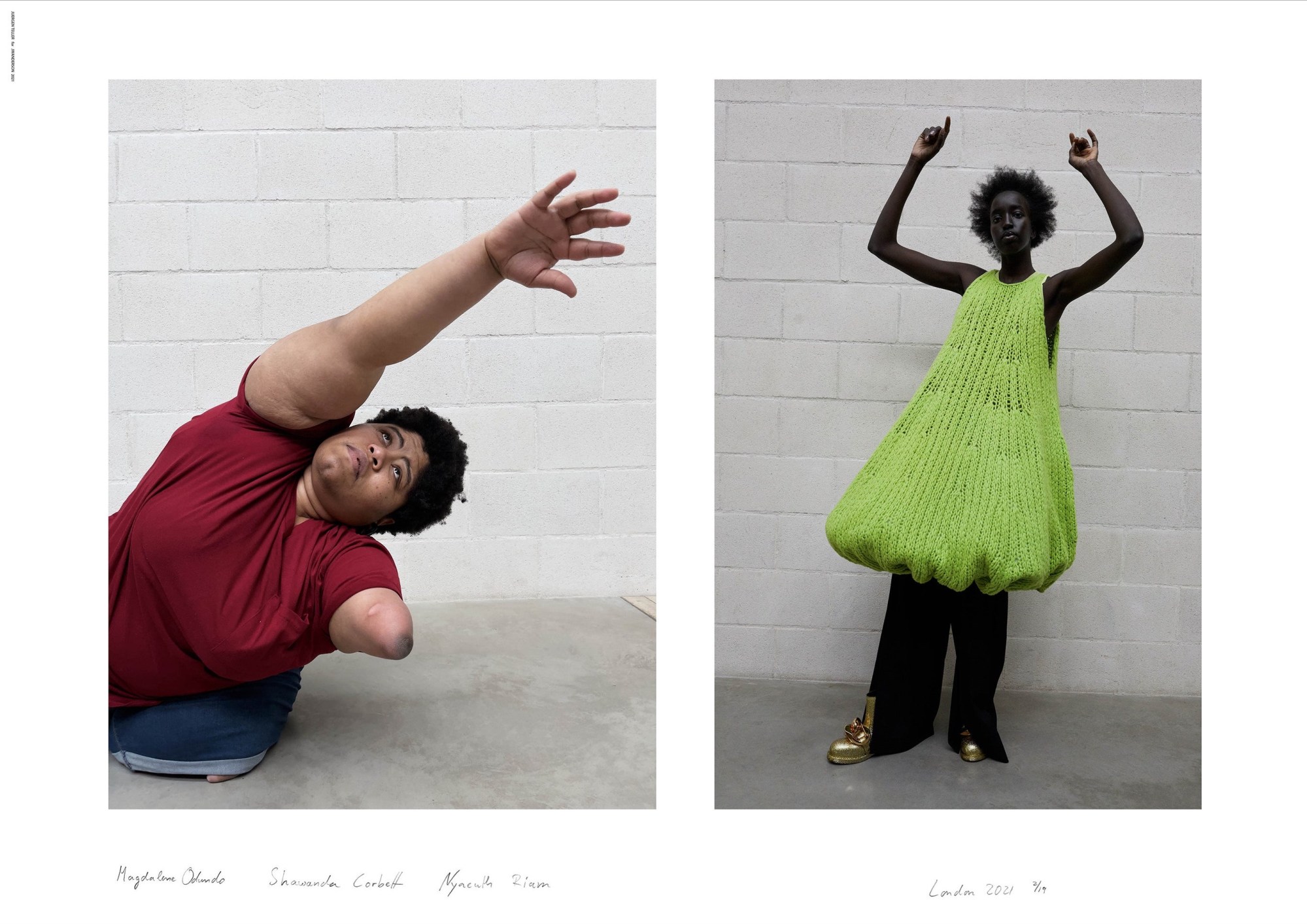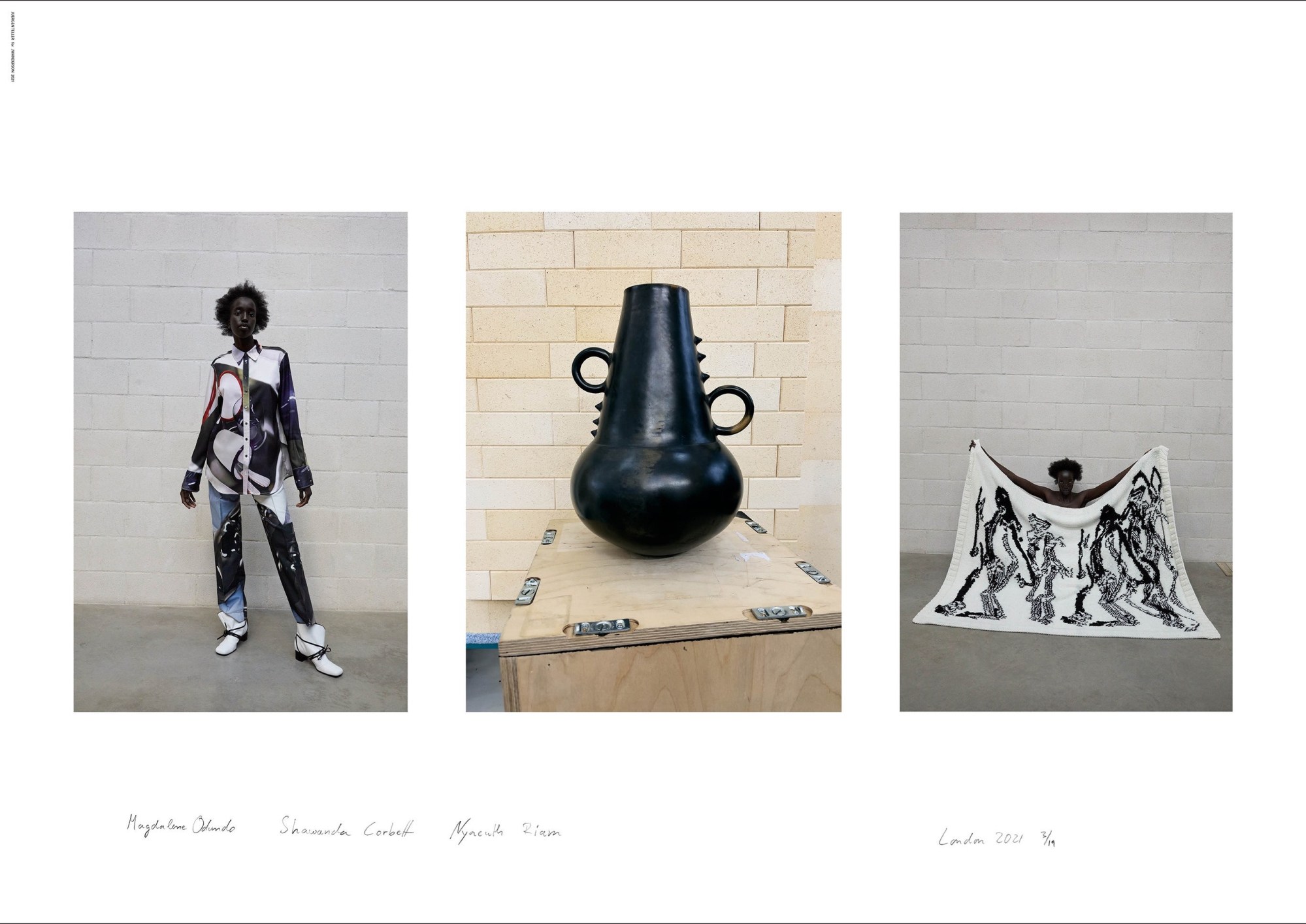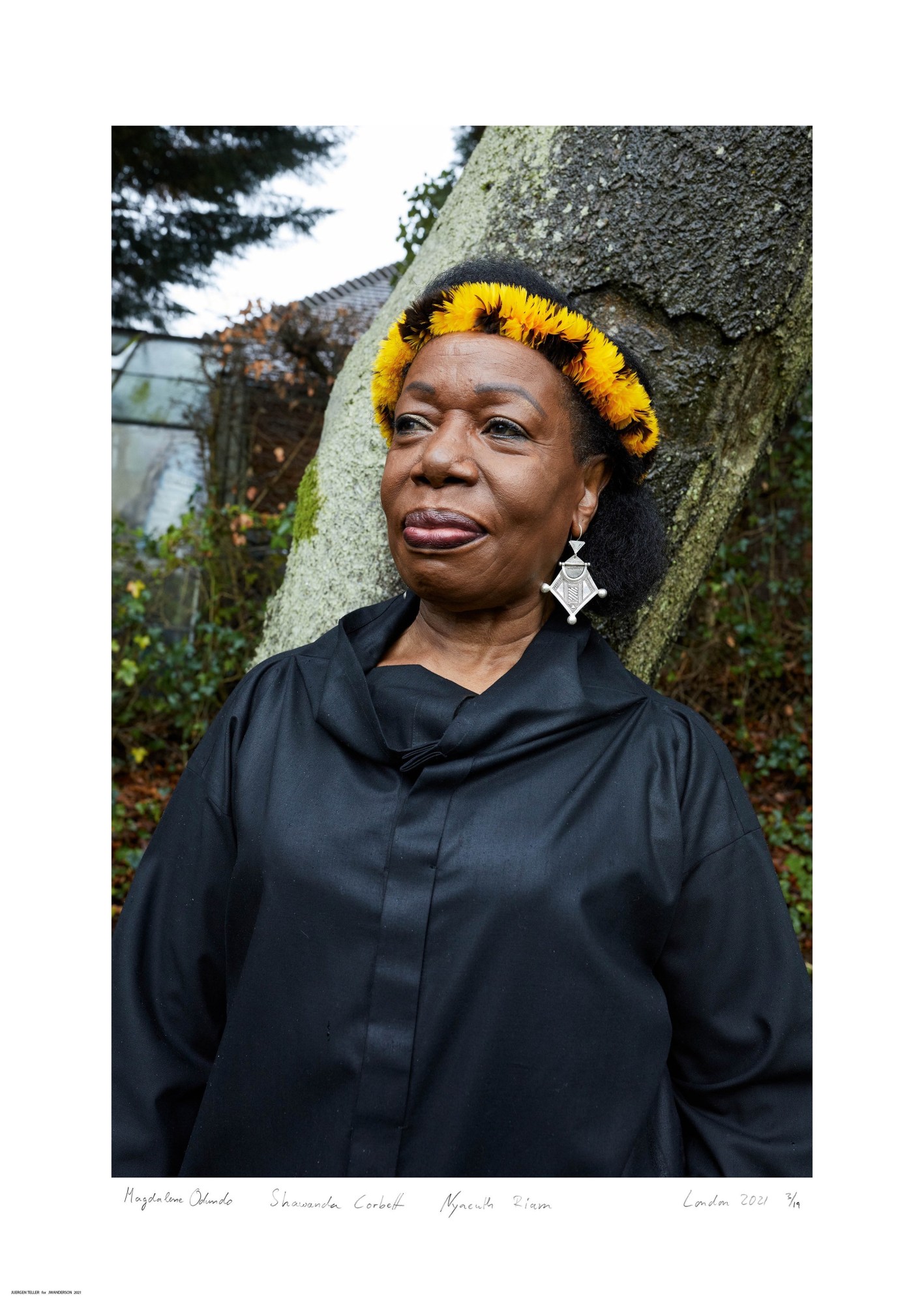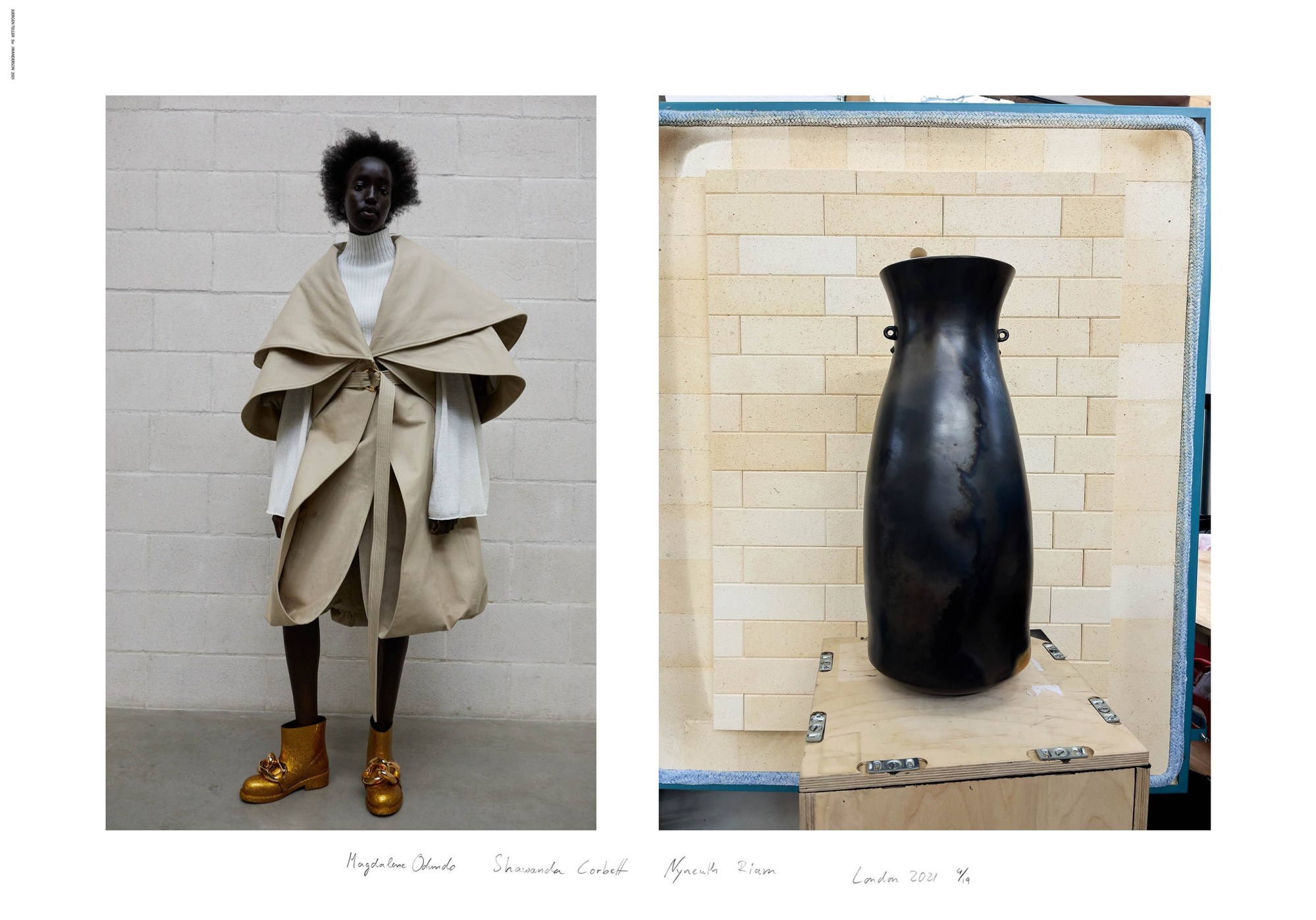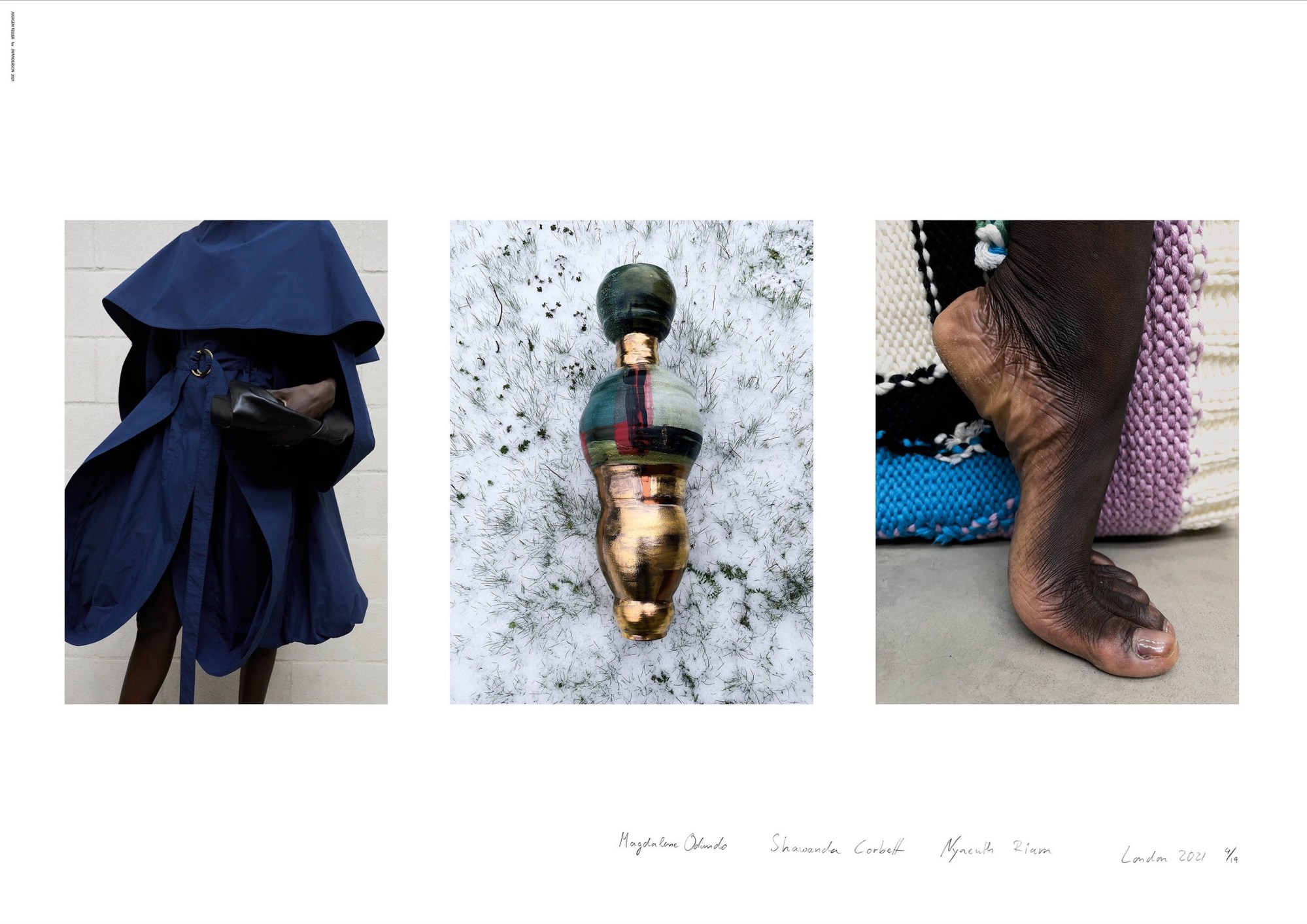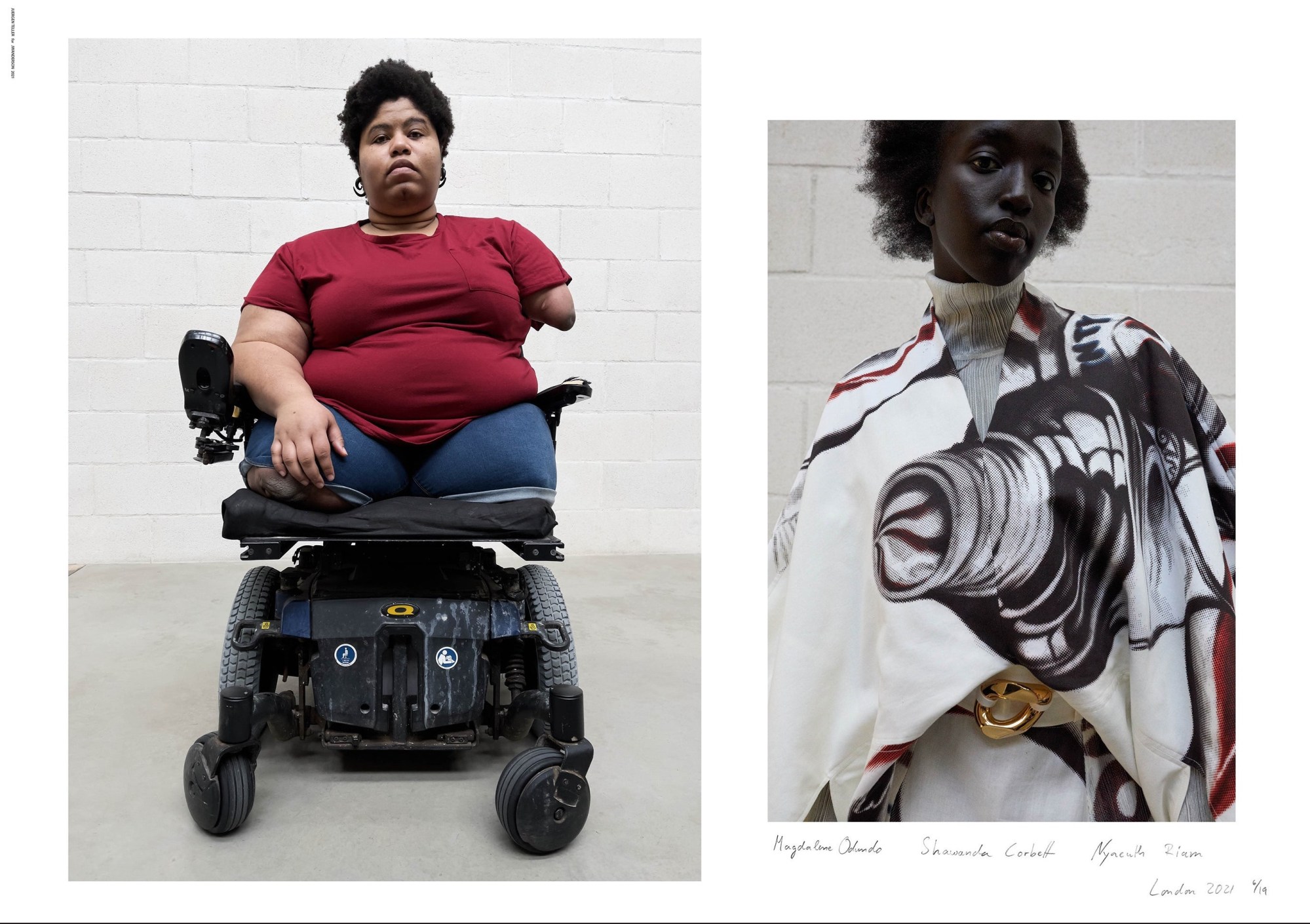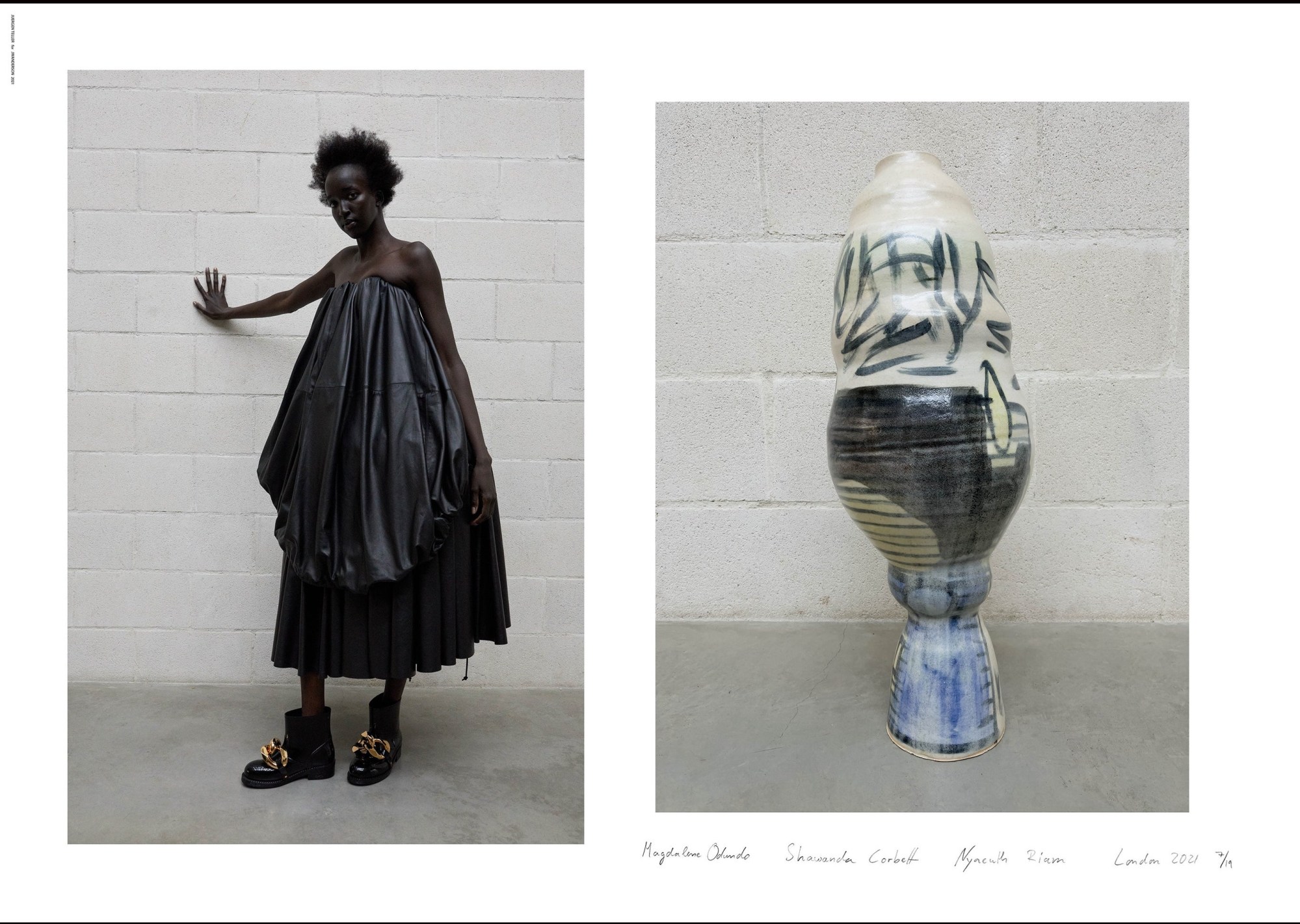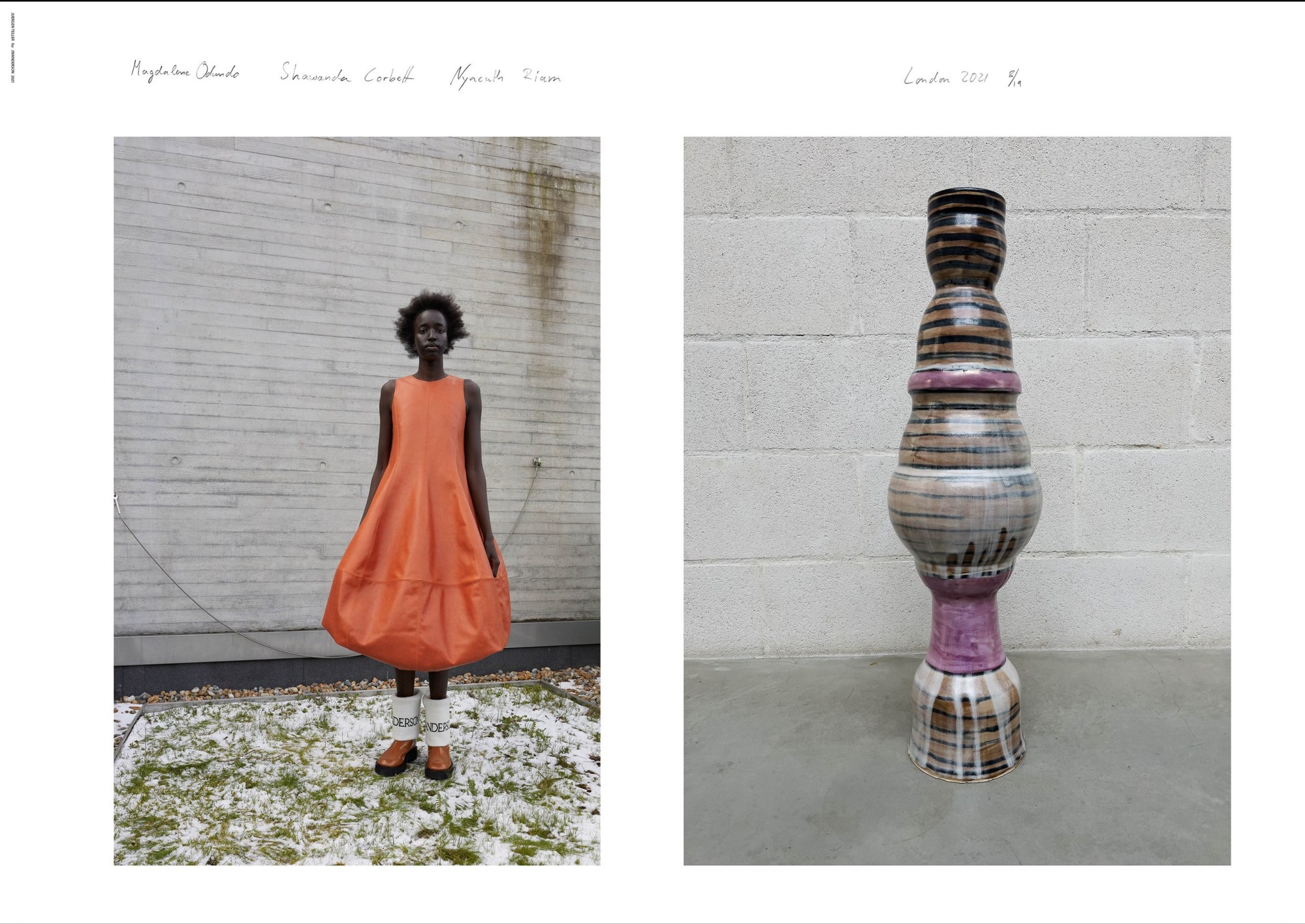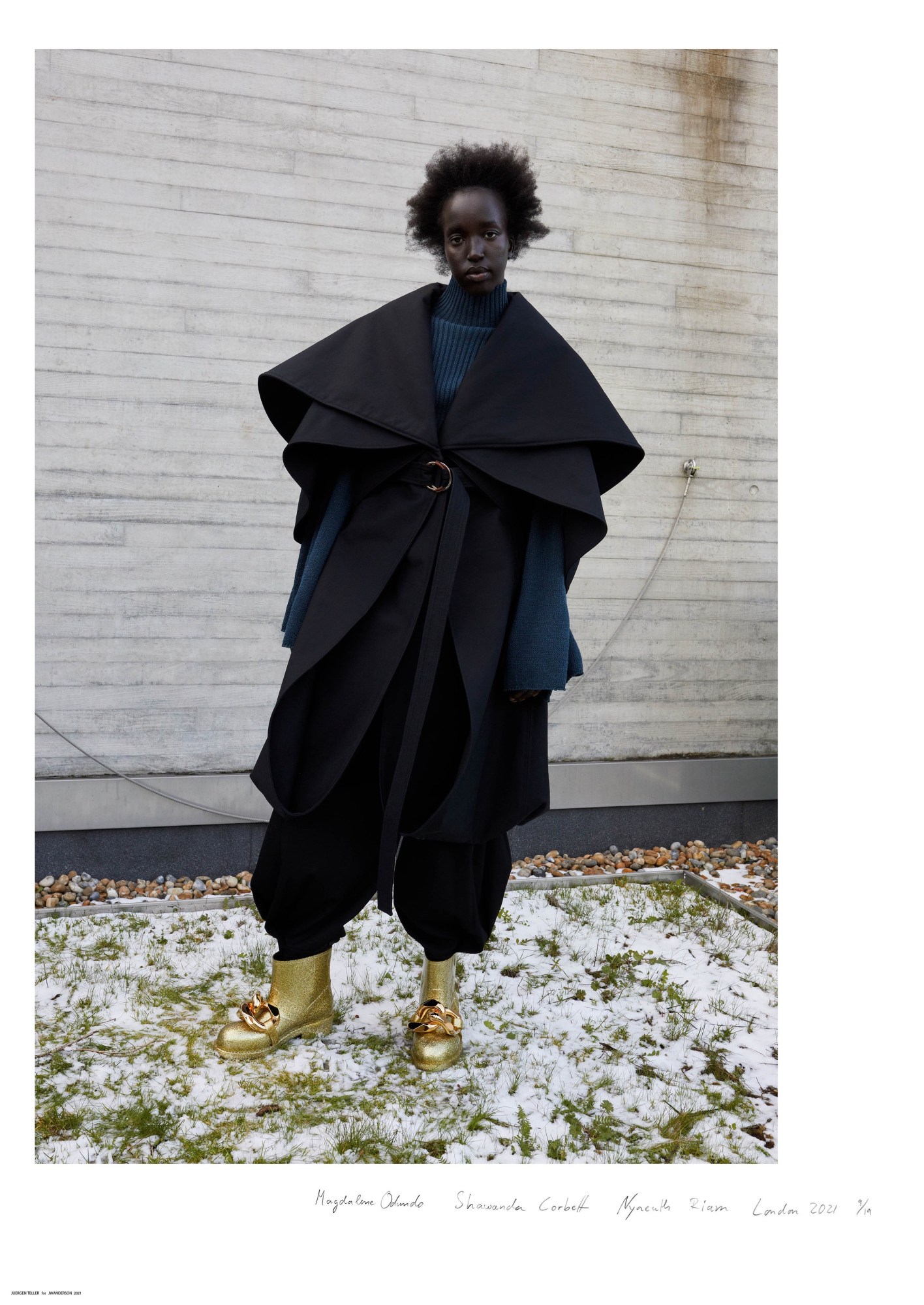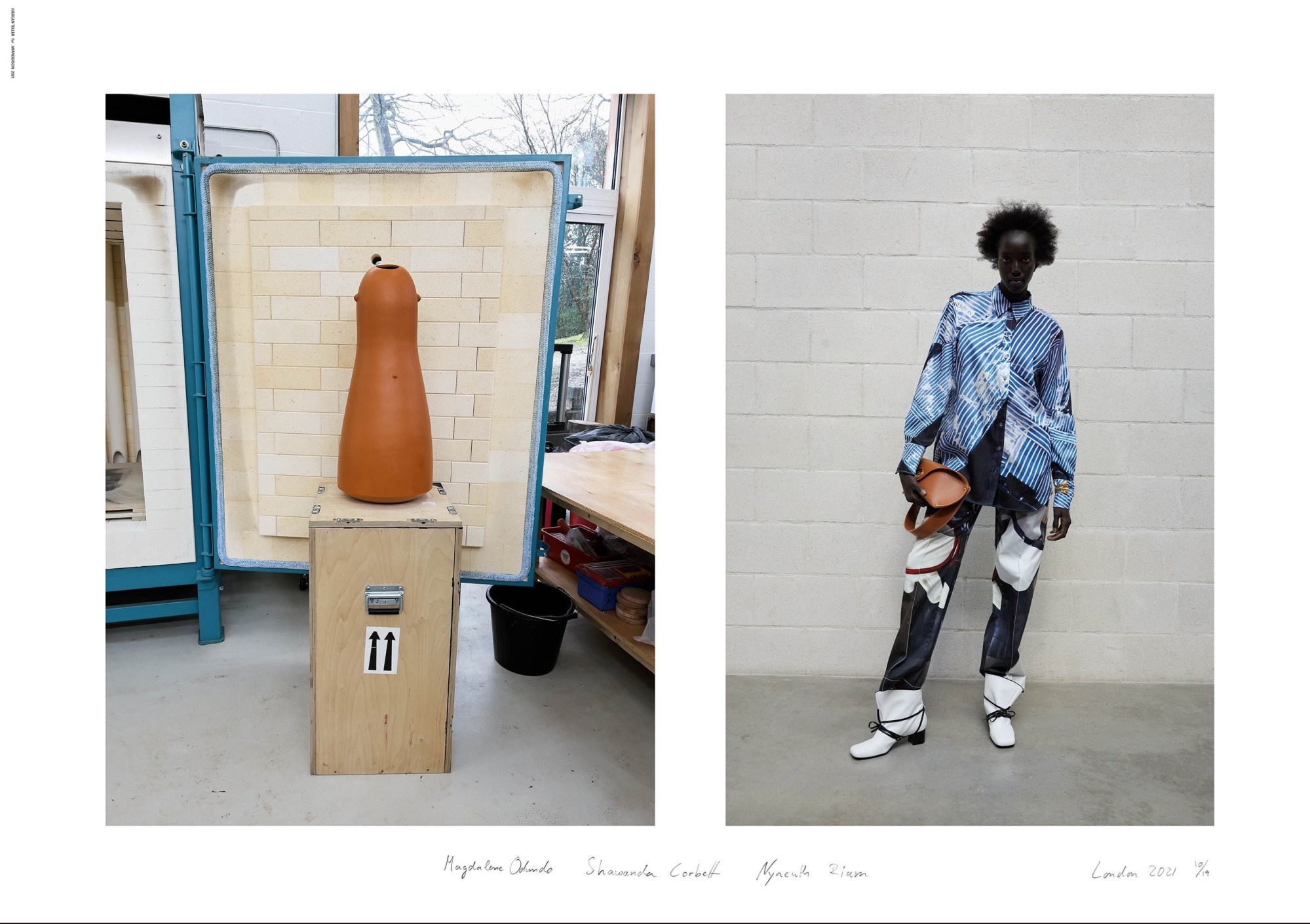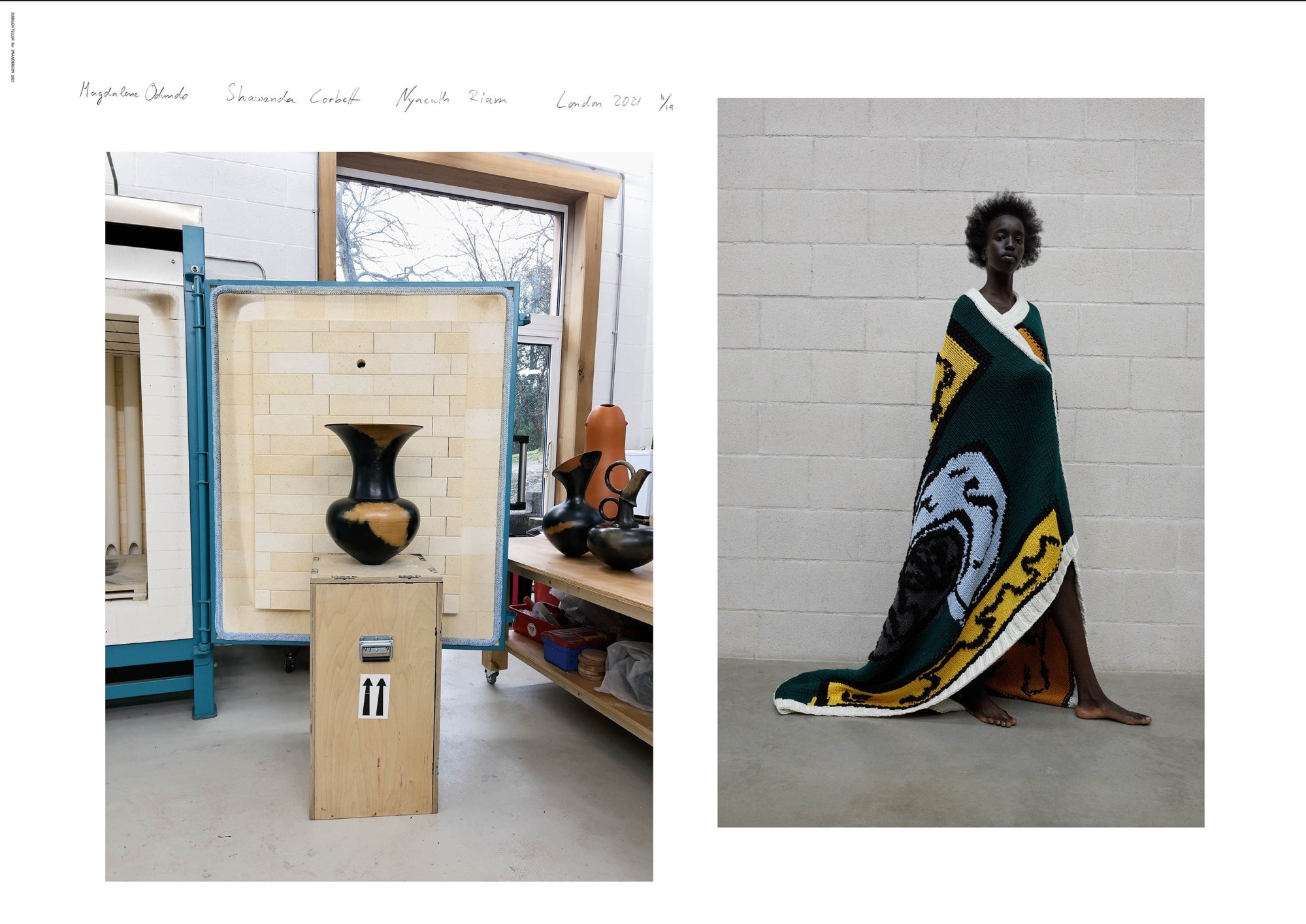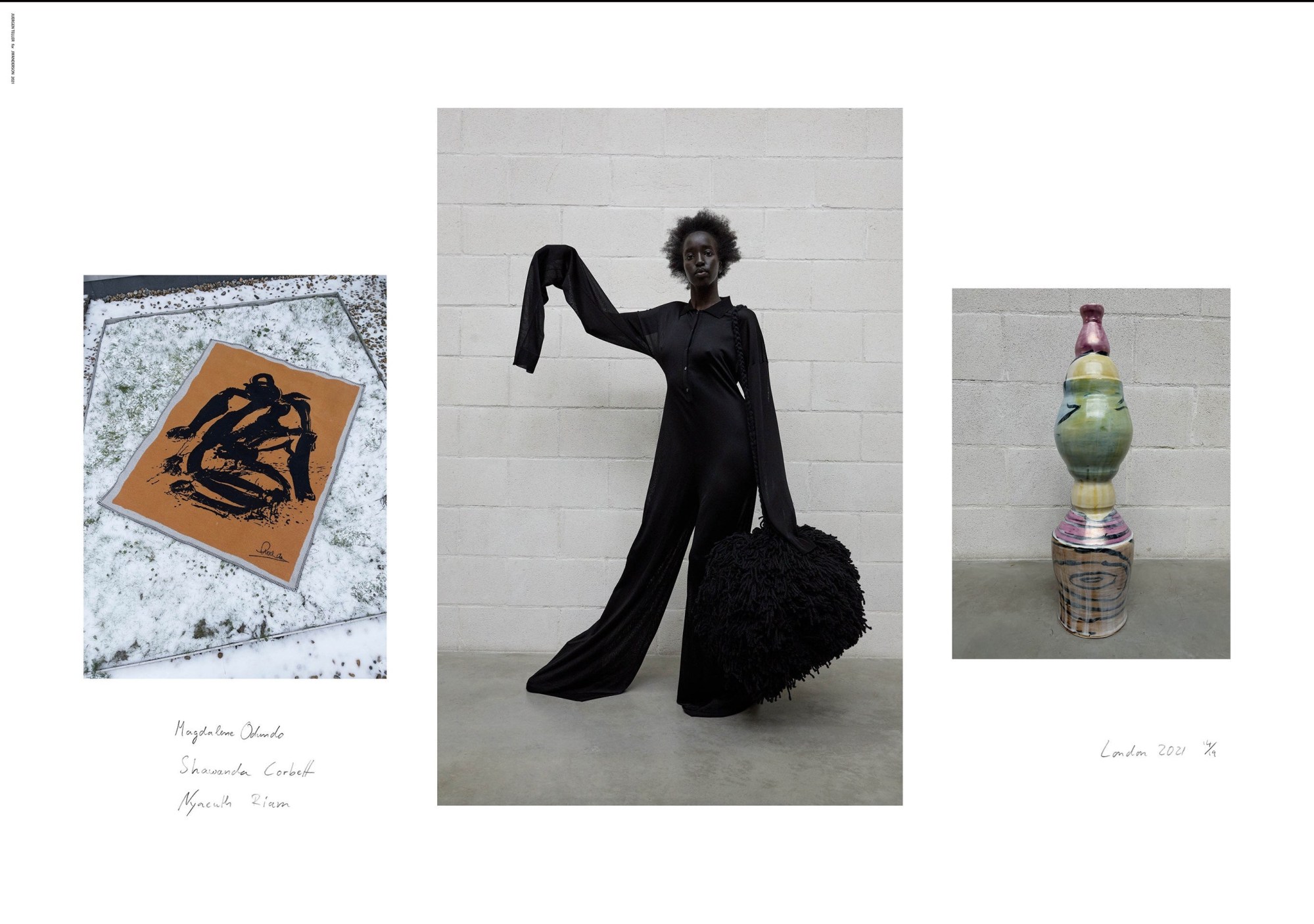Back in 2017, Jonathan Anderson curated Disobedient Bodies, an exhibition for the Hepworth Wakefield gallery in Yorkshire, where he juxtaposed the works of artists and designers that challenged the parameters of the body. He described it as one of “the most personal projects I have ever done” and for JW Anderson AW21, he revisited it, reflecting on the power of gallery shows and the future of fashion ones. The result was a collection that picked up where Disobedient Bodies left off — “picking up dialogues”, as he puts it. He called on his old friend, Dame Magdalene Odundo, who he describes as “probably the most important ceramicist of the 21st century”. They first met when Jonathan was working on the exhibition and have remained close since. Last year, it transpired that they happen to have a mutual appreciation for the work of American ceramic sculptor and performance artist Shawanda Corbett. So, Jonathan enlisted them both to star in his lookbook, both in portraits of them and their work alongside model Nyaueth Riam, photographed by Juergen Teller. As far as fashion-art collabs go, it’s an organic, homegrown one.
The AW21 collection itself is all about volume, mainly big bell-shaped dresses and sculptural petal-like coats. Jonathan also worked on tapestry-like blankets that are inspired by Shawanda’s paintings, worn wrapped around the body like the kind of anxiety blankets that have sky-rocketed in sales during lockdown. “I think there’s this idea of the silhouette, when you take a pen and draw something on the page, this kind of working out a volume,” explains Jonathan. The two-dimensional becoming three-dimensional, in other words; the flatness of drawings and paintings translated into sculptural silhouettes that are then draped around the curves of the body. “That’s what ties everything together,” he adds. “How do you reinterpret the body? It goes back to this idea of Disobedient Bodies. I’ve always been obsessed by Barbara Hepworth, and looking at what Christian Dior was doing in that exact same period. Or like Eileen Gray and Madame Grès.”
Ultimately, the 2D-becoming-3D then becomes 2D again in a series of 19 double-sided posters shot by Juergen Teller, who Jonathan first collaborated with for his AW21 menswear collection. Over the last year, the Northern Irish designer has been a pioneer when it comes to alternatives to physical fashion shows, finding inventive ways of showcasing his pandemic-era collections that still manage to capture the joy and excitement of a catwalk spectacle. Every element is thoughtfully considered. “When we digest imagery at a fashion show, we are seeing it as a moving thing,” Jonathan points out. “Why I think it was interesting with the posters and curating these things and shooting them in object form is that you are digesting it in the truest way. I think the reason Juergen has been really powerful is because there is no retouching; it is shown as it is done, in daylight – you actually get probably the truest sense of the colour of the garment that you would on a runway.” He adds that he is somewhat nervous of returning to shows, simply because he has enjoyed the experimentation and process of thinking outside of the box — or in it, in the case of the SS21 #ShowInABox.
“I weirdly think this idea of democratised fashion — in terms of receiving information — needs to increase, especially in terms of tactile things, because probably a digital show isn’t enough,” he continues. He says that if he could, he would print thousands of the posters and have them in a broader range of locations around the world for more people to appreciate. “I remember when I first started in fashion, there was this moment when everyone thought that the fashion show was irrelevant and was going to die,” he points out. “Everyone forgets that moment because digital shows didn’t work and it still doesn’t engage you with the product.” His point is interesting considering the AW21 season’s predilection for pre-recorded shows without audiences, which ostensibly illustrate that fashion is an old boat that likes what it knows.
Whereas last year, designers and houses briefly became experimental with digital presentations — now, they’re just staging them behind closed doors, eagerly anticipating the return to the old ways. “I think fashion is a creature of habit and when you talk to people, they will be like ‘Well, you know since the ‘50s we’ve been doing shows and they survived the war’,” Jonathan chimes in. “My question, and I have no answer to this, is that fashion shows aren’t working anyway — so what else could it be? My whole thing is I don’t really think it is working, I don’t think fashion was working [before the pandemic], I think we were at the end of a cycle, and the pandemic sped that up, and I think we will revert quickly back to things and then it will crash.”
At this point, Jonathan launches into a missive on the future of fashion. “I think if we believe in a scorched-earth policy and we rebuild from it, I think fashion could find new rhythms,” he says. “Maybe fashion weeks are different, maybe seasons are not the same anymore because the weather has changed, maybe department stores that were powerful are no longer powerful, brands that used to be big are no longer big. There will always be newness, just at the moment everyone’s putting their knife to the ground that it’s going to be this but the idea of going back to what it was before, it’s going to be boring.” He’s recently watched Adam Curtis’ six-film BBC series, I Can’t Get You Out of My Head, which examines the power structures and political whims that have shaped our world. “It makes you question things when you look at history and see that we are making the same mistake over again,” says Jonathan. He could well be fashion’s oracular Cassandra figure, yet he is hopeful, constantly searching for solutions, willing to experiment, especially with his own JW Anderson line. “I’m an optimist,” he smiles. “People need to enjoy things a bit more.”
